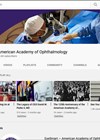LinkedIn is the world’s largest professional social networking site, that allows over 830 million users from over 200 countries from a variety of industries to connect. As a result, it is a powerful tool used by professionals to network, collaborate, and grow their own online presence.
LinkedIn however is typically perceived to be a tool for non-medical professionals working in sectors such as finance or technology, and hence is typically ignored by clinicians and ophthalmologists who are unaware of the benefits. It can be particularly useful for ophthalmologists as it is such a diverse specialty, thus networking, collaborating, and creating an online presence using LinkedIn can help inspire and discover new opportunities that would otherwise be unknown.
In this article I will go over the top five ways in which LinkedIn can be useful for ophthalmologists, as well as provide tips on how to get the most out of it.
1. Networking
The phrase “It’s not what you know but who you know” has a lot of truth to it. The premise of LinkedIn is based on this mantra; hence it provides a platform for users to network and make connections. There is an endless list of medical professionals open to making new connections, with even experts in various fields typically open to networking when approached in a genuine manner. It can be a great place to start as a young ophthalmologist new to training with a limited network to create their own network based on their specific interests. It also provides more senior ophthalmologists with more established networks to broaden their networks potentially to connect with colleagues in different fields or even sectors, such as the medical start-up sector. All of which creates an environment of discussion of various topics, collaboration on potential quality improvement or research projects, and the sharing of professional achievements and experiences. Expanding your network on LinkedIn can be achieved by using the search function to search for individuals or institutions or by joining different groups that align with your interests.
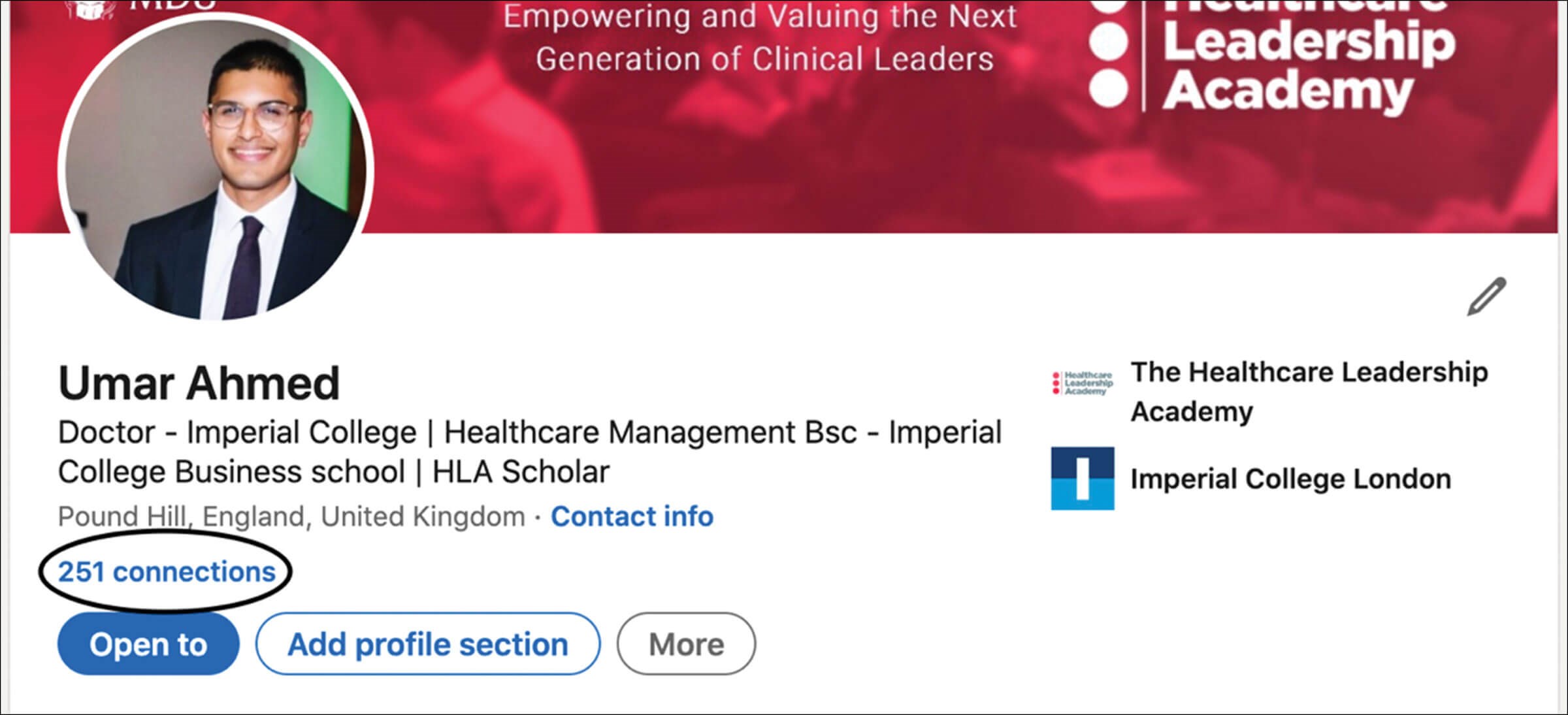
As you can see, my profile has over 251 connections, hence a large network I can interact with.
2. Mentorship
What is mentoring? It’s a partnership where the mentor can pass across knowledge, skills, and wisdom from their own experiences to aid and maximise the growth of their mentee. Throughout ophthalmology applications and specialty training, you will be forced to navigate a complex and ever-changing landscape. Knowing how to cope on a job, or how to progress into a particular role, or even knowing what you want from your career can be unclear and confusing. Knowing someone who has been in a similar position can therefore be invaluable in such situations, leading to a more fulfilling career and the avoidance of burnout. Mentors can be found in various places including your local hospital. LinkedIn provides a large community of ophthalmologists where you can find individuals who inspire you and have been in the positions you are in. By being genuine in your approaches to potential mentors and showing enthusiasm, you will be surprised how helpful others will be.
3. Creating an online presence
LinkedIn profiles get ranked highly by Google searches, hence creating a complete profile will allow you to appear on the first page when searched. This is a great way of creating an online presence and to control the way you, as an ophthalmologist, are perceived online. When, inevitably, colleagues, employers and even patients search you online you will have control over what they see. This will be particularly important for ophthalmologists trying to control and create their own brand for private practice. LinkedIn can also work as a clear documentation of your qualifications and achievements, acting as a CV which can be easily updated. Ways you can make your profile more impressive is by having a good quality profile picture, and making use of the recommendations section. Requesting colleagues to provide feedback regarding working with you and your skills will help provide more credibility to your profile.
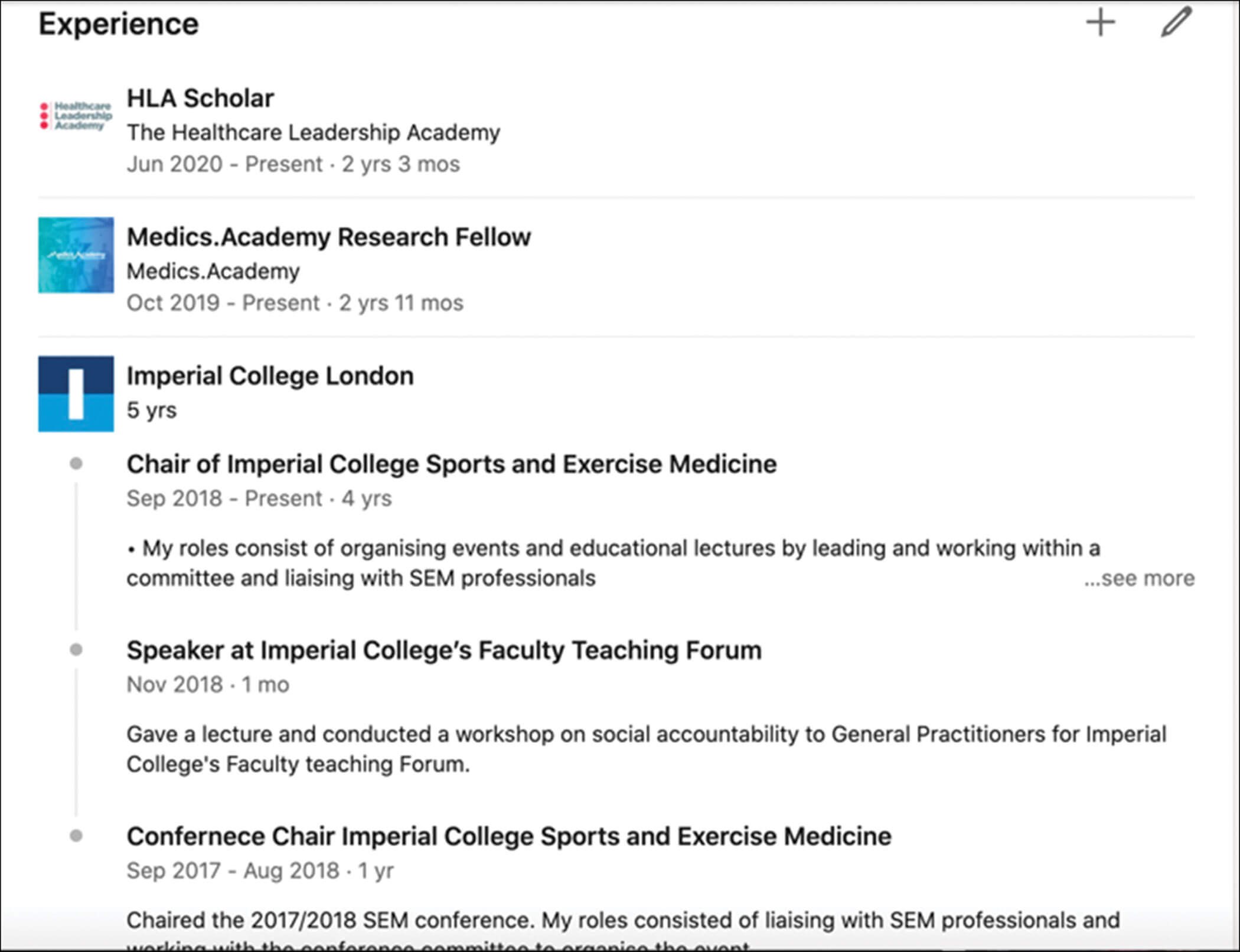
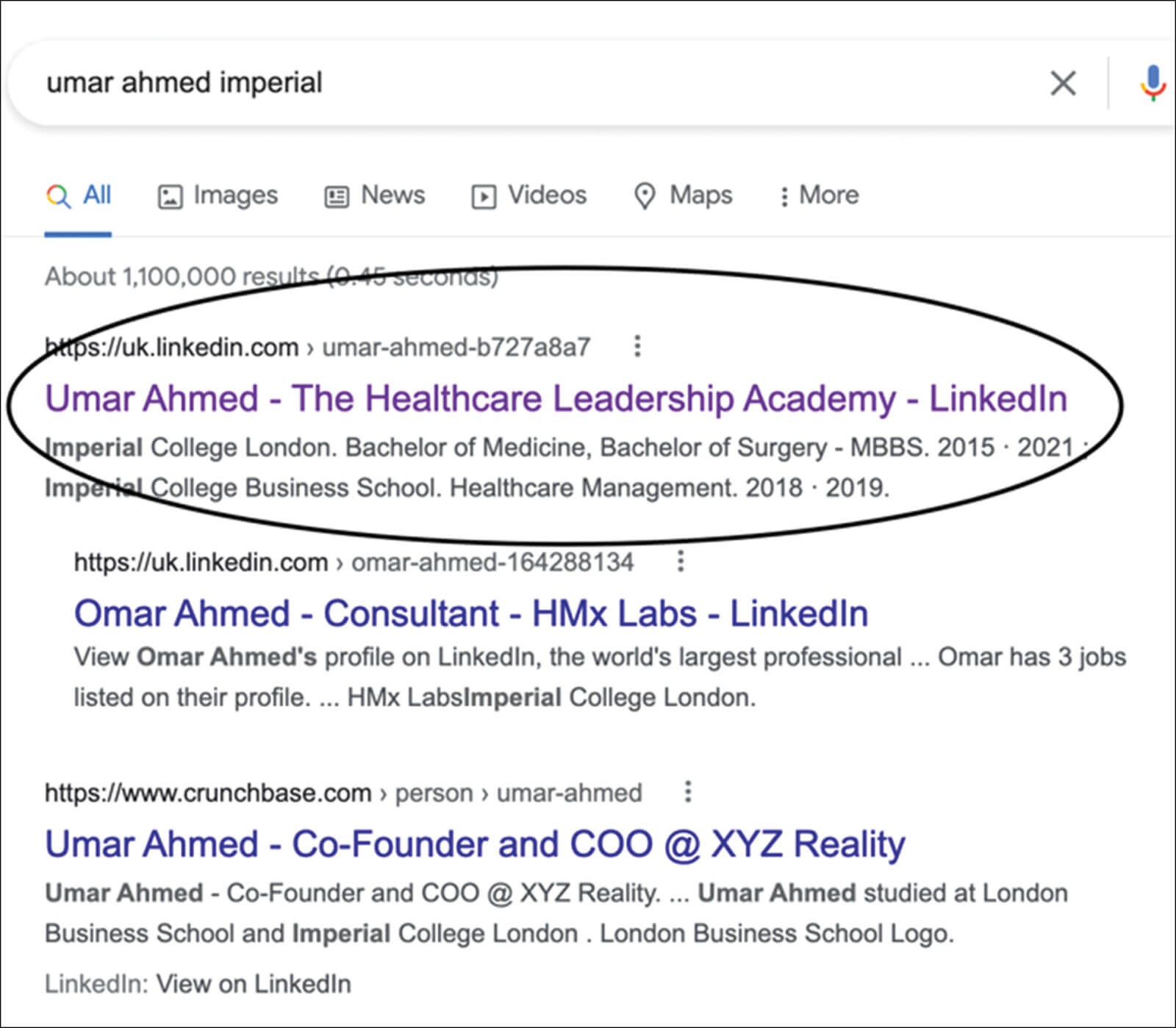
On the top you can see a clear history of the positions held by myself, which needs some updating! Further down on that page you would also be able to see other sections such as education, skills, recommendations, making LinkedIn a good way to keep an up-to-date CV and keep track of your achievements. The image on the bottom shows when you search my name with another keyword. You can see my LinkedIn profile comes up first in the Google search engine, giving me control of my online presence.
4. Relevant information
The relevant connections you make, groups you are a part of and pages you follow will allow you to curate your newsfeed. As opposed to other social media sites, the feed will all be professionally related, highlighting the following: your colleagues’ ongoing achievements and posts which will perhaps inspire you, available conferences and courses, competitions and bursary opportunities, and the latest developments in ophthalmology. The more connections you make and the more effort you put into finding different pages to follow, the better your feed will be, and the more you will get out of it.
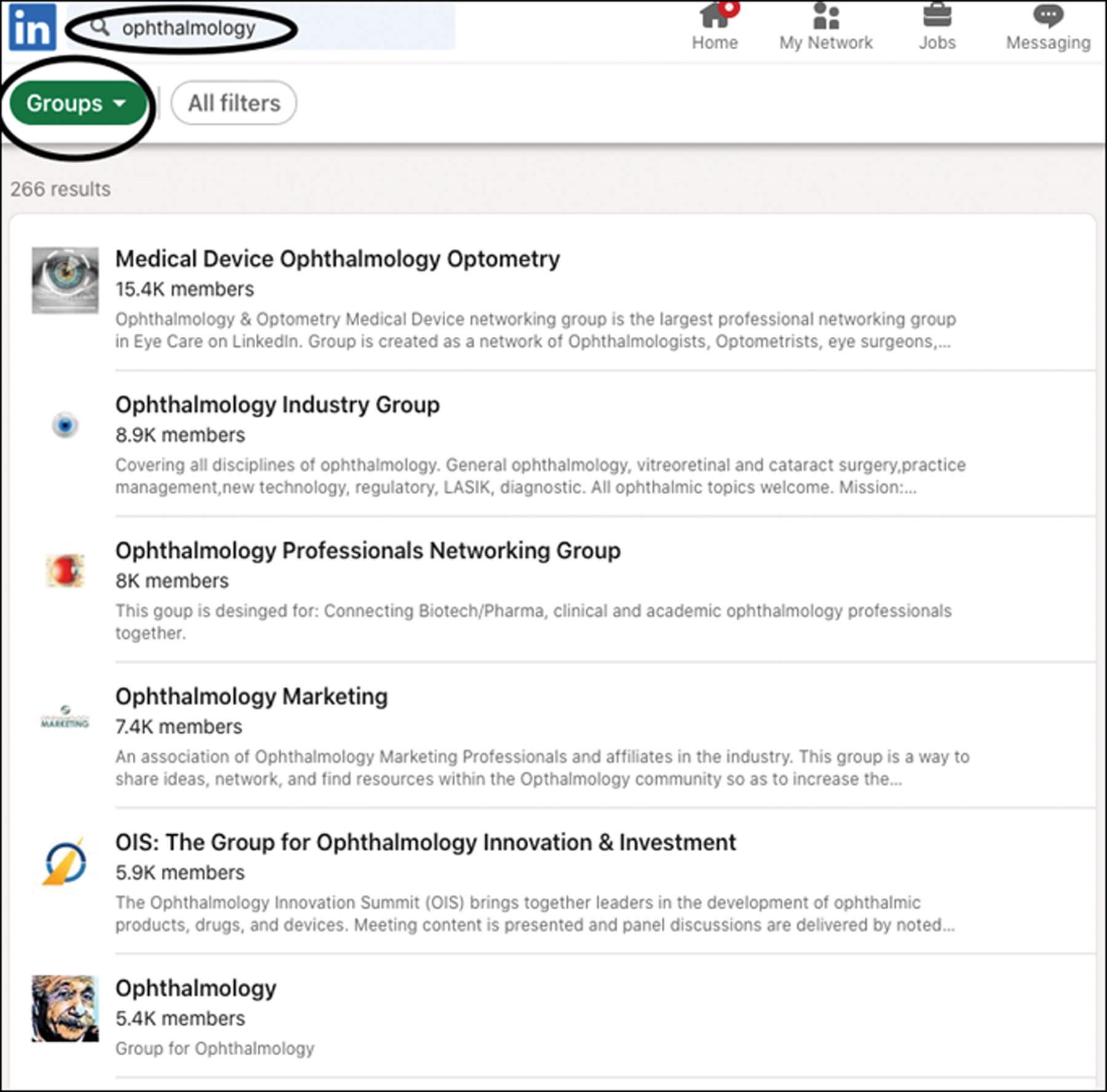
By searching ophthalmology related groups, you can use the search bar
and then filter by group to see any groups that interest you.
5. Sharing content
LinkedIn also gives you a voice. It allows you to engage with networks, groups, and communities on the topics within ophthalmology that interest you. It also gives you the opportunity to post and discuss projects and research you do with your peers, as well as educate your peers. All of which, again, will contribute to your online presence. The more active you are on LinkedIn, discussing about your specialty or interest, the more it will provide further opportunities. It can help demonstrate that you have specialist knowledge in your subspecialty, creating potential opportunities to speak at events and conferences.
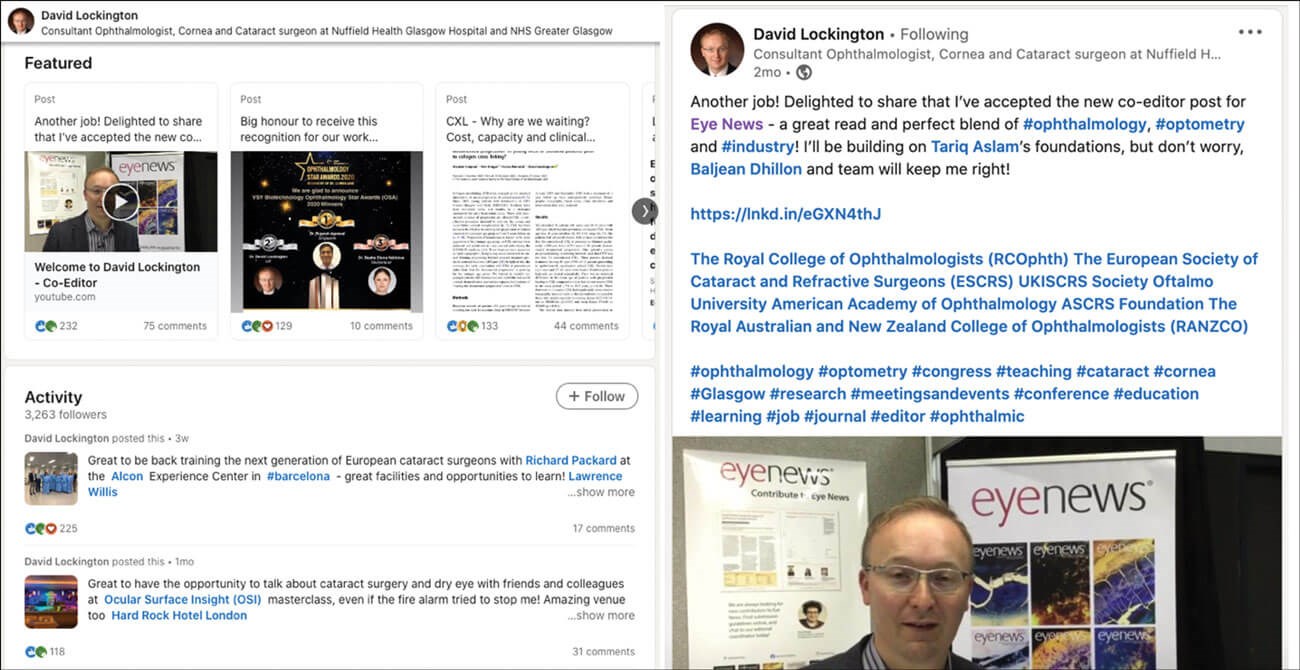
As you can see, David Lockington (Eye News co-editor) is active on LinkedIn, sharing research
and awards, including his post on becoming the new co-editor of Eye News!
All of these uses of LinkedIn can provide tremendous benefits to ophthalmologists at all levels, of all subspecialties and interests. So, take some time out, join, and start taking control of your online profile.
COMMENTS ARE WELCOME






